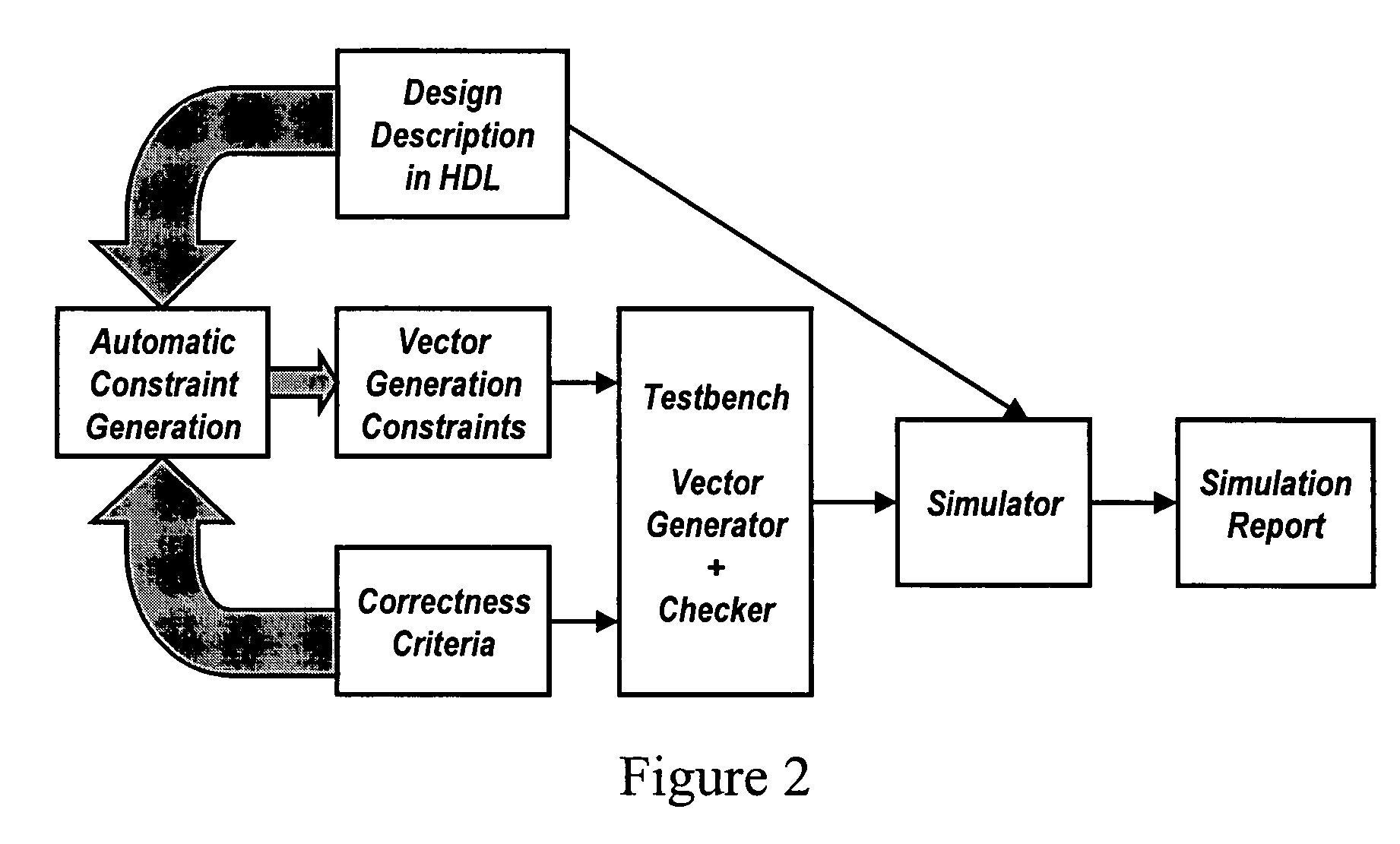Property specific testbench generation framework for circuit design validation by guided simulation
a technology of guided simulation and testbench, which is applied in the direction of cad circuit design, program control, instruments, etc., can solve the problems of functional validation, hinder the successful design of large and complex hardware or hardware-software combinations, and the formal verification technology, including ctl-based model checking, is not robust enough to be relied upon as the sole validation technology
- Summary
- Abstract
- Description
- Claims
- Application Information
AI Technical Summary
Benefits of technology
Problems solved by technology
Method used
Image
Examples
Embodiment Construction
Smart Testbench Generation Framework.
[0057]Consider the testbench generation framework shown in FIG. 3. In this discussion, the focus is on the use of CTL for formal specification of correctness properties, and these ideas can be applied similarly to other forms of specifications such as LTL, ω-regular automata etc. Furthermore, the properties for which targeted vector generation is performed could either be provided manually by the user, or be derived automatically from the hardware definition language (HDL) based on generic notions of correctness, e.g. through use of assertions.
[0058]The testbench consists of: (1) a test vector generator, and (2) a checker module (monitor) which checks for violation or satisfaction of the property (whether violation or satisfaction is checked depends on the nature of the property). In this framework, the testbench including the vector generator and checker is in C. It could equivalently be generated in a testbench language like E or VERA , or a h...
PUM
 Login to View More
Login to View More Abstract
Description
Claims
Application Information
 Login to View More
Login to View More - R&D
- Intellectual Property
- Life Sciences
- Materials
- Tech Scout
- Unparalleled Data Quality
- Higher Quality Content
- 60% Fewer Hallucinations
Browse by: Latest US Patents, China's latest patents, Technical Efficacy Thesaurus, Application Domain, Technology Topic, Popular Technical Reports.
© 2025 PatSnap. All rights reserved.Legal|Privacy policy|Modern Slavery Act Transparency Statement|Sitemap|About US| Contact US: help@patsnap.com



